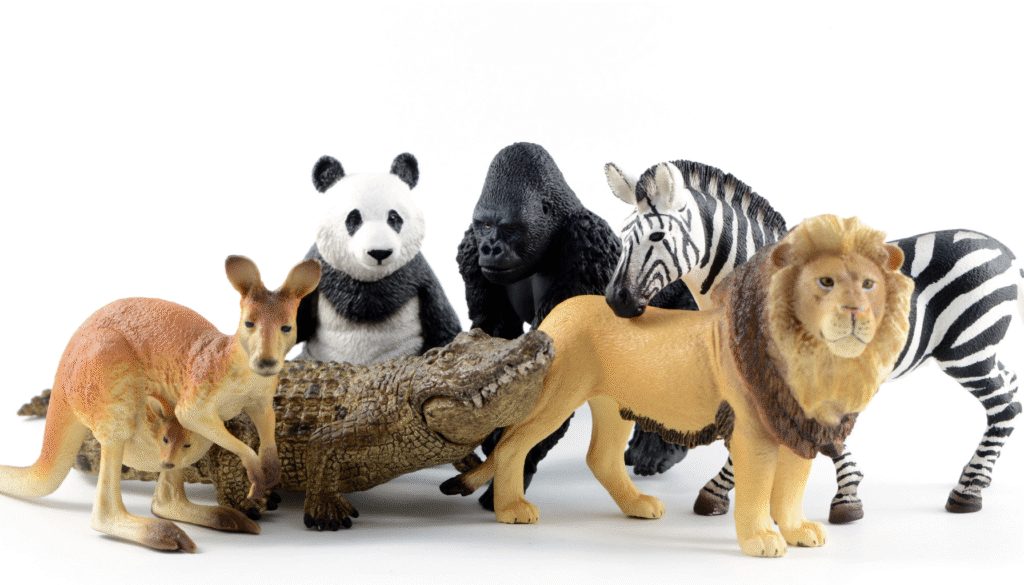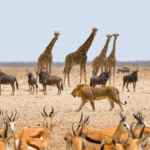Have you ever imagined finding an animal that can survive in the vacuum of space—or one that can completely freeze and then come back to life? The animal kingdom is filled with creatures whose abilities are so extraordinary they seem straight out of superhero stories.
In this article, we’ll explore seven animals that possess true natural “superpowers”—some of which science is still trying to fully understand. Get ready to be amazed by nature’s creativity!
1. Tardigrade — the indestructible
Also known as the water bear, the tardigrade is a microscopic creature that can survive conditions that would kill virtually any other life form. It can withstand temperatures from -270°C to over 150°C, immense pressures, radiation, complete dehydration—and even the vacuum of space.
How? It enters a state called cryptobiosis, where it essentially shuts down all life functions. In this state, a tardigrade can remain dormant for decades and come back to life with just a drop of water.
2. Axolotl — the regeneration master
The axolotl, a species of Mexican salamander, has a rare and powerful ability: it can regenerate complex parts of its body, including limbs, tail, organs, and even parts of its brain and heart. Unlike most animals that heal with scar tissue, the axolotl regrows fully functional cells.
Because of this, it has become a key model for research in regenerative medicine and tissue engineering.
3. Chameleon — camouflage and 360° vision
Chameleons are famous for their color-changing abilities, but this “superpower” serves multiple purposes. Beyond camouflage, they use color changes to communicate emotions and intentions, like attracting mates or warning rivals.
They also have unique eyes that move independently, allowing them to observe two different points at once. This gives them nearly 360-degree vision—perfect for hunting and avoiding threats.
4. Vampire bat — natural thermal sensor
The vampire bat has infrared sensors on its snout, allowing it to detect body heat with pinpoint accuracy. This helps it locate blood vessels in its prey, usually large mammals.
It’s as if nature gave it a built-in thermal vision system—remarkably advanced and incredibly effective.
5. Mantis shrimp — the world’s fastest punch
The mantis shrimp is a colorful crustacean that packs the fastest and most powerful punch in the animal kingdom. Its club-like claws strike with such speed (over 80 km/h in milliseconds) that they create cavitation bubbles—which implode with light and heat.
On top of that, the mantis shrimp has one of the most complex visual systems known to science. It can see ultraviolet and polarized light, using up to 16 types of color receptors—while humans have only three.
6. Alpine salamander — the slowest pregnancy in the animal world
The alpine salamander, found in cold mountain regions of Europe, has a unique reproductive strategy: it carries its developing young inside its body for up to three years! This extremely long gestation allows the offspring to be born fully developed and better equipped to survive harsh environments.
It’s as if nature granted this salamander the power to control its biological clock.
7. Electric ray — generating natural electricity
The electric ray can generate electrical shocks of up to 600 volts, which it uses for hunting and self-defense. These impulses are produced by specialized organs called electrocytes, which function like natural batteries.
Some scientists are studying this ability for inspiration in developing alternative energy sources. After all, what’s more efficient than creating power with your own body?
Nature’s Power Lies in Every Detail
These seven animals show us that when it comes to adaptation, evolution, and survival, nature never runs out of creativity. Each “superpower” is a precise response to a specific environmental challenge—crafted over millions of years of evolution.
More than just impressive, these creatures are inspiring. Learning from the natural world could lead to human breakthroughs in medicine, engineering, and even the way we connect with the planet.



